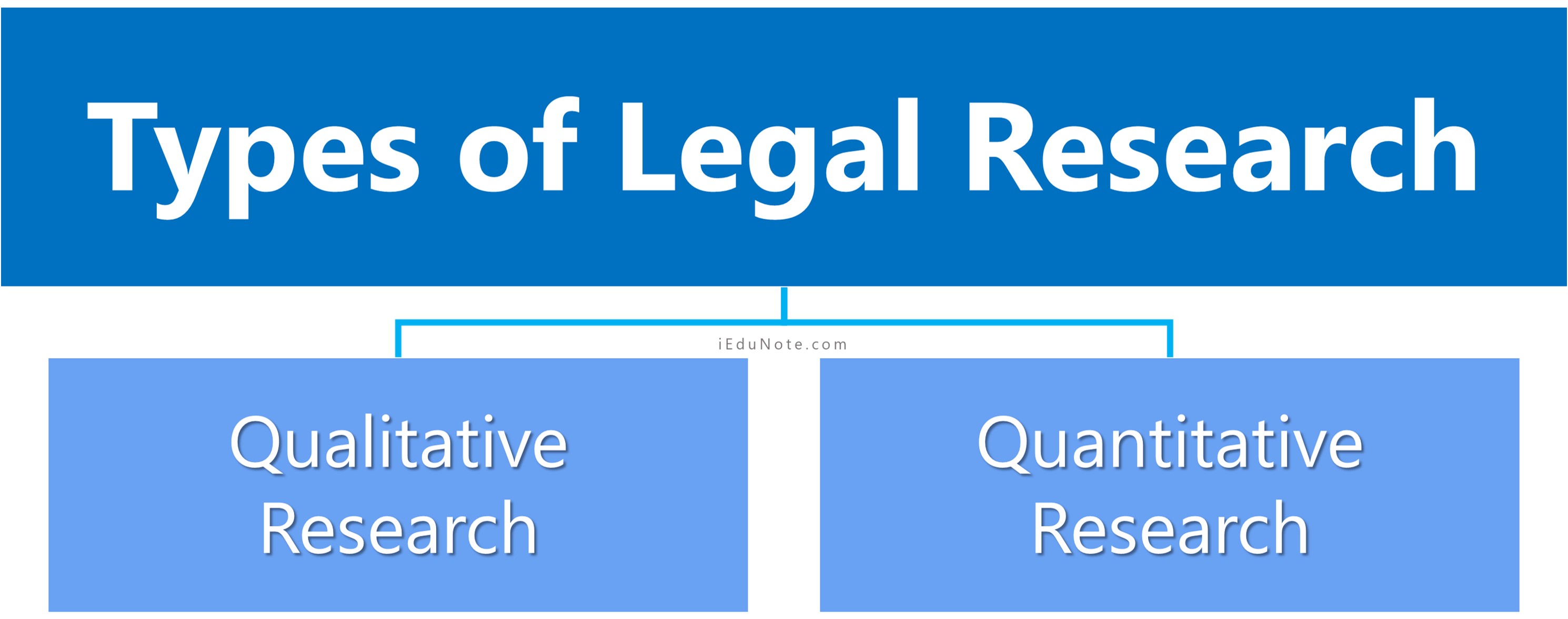Legal research methodologies explore unsettled legal questions, acquire and analyze relevant information, and apply findings to solve legal problems.
Let’s understand the definition of legal research methodologies and the types and approaches to Legal research methodologies.
Understand Legal Research Methodology
What is Legal Research Methodology?
Legal research methodologies serve three main functions, exploring a legal problem, critically describing facts and legislation, and explaining or interpreting legal issues and concepts.
Why is a methodology needed in the first place?
The methodology is a means of inquiry to achieve these purposes in a meaningful way.
In legal research, the methodology;
- is a systematic inquiry that provides information to guide legal research,
- is the trained and scientific investigation of the principles and facts of any subject,
- helps the readers understand the research methods to discover the truth and evaluate the results’ validity,
- helps the researchers follow a consistent logic in research and prepare them to meet possible challenges,
- is also an important way to jam reliable and valid knowledge and explore the relationship between theory and practice.
Understanding research methods will help students conduct and write up their research monographs, dissertations, or theses systematically.
However, research methodology is different from research methods. ‘Research method’ usually implies all methods and techniques used to collect and process the data.
Thus, the method is a tool or technique such as a qualitative or quantitative method. It also includes interviews, case studies, or surveys.
On the other hand, research methodology refers to the body of methods that guide thinking within a specific field of study.
A methodology is a justification or rationale for the research approach and is concerned with the general strategy or approach of undertaking research.
Legal research methodology is a must.
It is vital for a researcher to know the research methodology and understand the underlying methodologies’ assumptions.
Researchers also need to know the criteria by which they can decide that certain methodologies will apply to certain problems.
Research methodology has been defined as the means of acquiring scientific knowledge. It has also been defined as a means to gather information and data to achieve a valid outcome.
Legal research methodology is simply a way of addressing and exploring unsettled legal questions or issues.
Legal research methodologies are techniques by which one acquires legally relevant information, analyzes, interprets, and applies them to resolve issues and present the findings.
Thus, legal research methodology is a scientific and systematic way to solve any legal question.
Legal research methodology also refers to rules of interpretation of legal problems and issues. It is a systematic effort to make an argument to arrive at a true or accurate account of the subject matter under consideration.
The researcher should explain properly why he uses a particular method to evaluate research results by the researcher himself or others. Adopting a particular methodology should stem from the research objective and purpose.

Types of Legal Research
Two types of Legal research are;
- Qualitative Research for Legal Research.
- Quantitative Research for Legal Research.
The main difference between qualitative and quantitative legal research is that; qualitative legal research is pure and applied research, concerned with the analysis of theories. Whereas quantitative legal research is concerned with testing the theories in the real world.
Depending upon the nature of the research question, legal research is also classified as descriptive and exploratory one.
Descriptive research attempts to describe a situation, problem, phenomenon, or behavior systematically. A description is concerned with making complicated things understandable and simple.
Exploratory research is undertaken to explore areas about which the researcher has little or no knowledge. It involves findings the reason for things, events and situations, showing why and how they have come to be what they are. Exploratory research enables the researcher to formulate problems for more in-depth study, develop hypotheses, and find the best solution.
Another popular distinction is between pure doctrinal research and non-doctrinal or empirical research.
While the former is theoretical work undertaken primarily to acquire new knowledge without a specific application, the latter is original work undertaken to acquire new knowledge with a specific practical application in view.
Doctrinal legal research is concerned with the analysis of legal theories, concepts, rules, and principles.
Most doctrinal legal research is based on the ‘black-letter law’ approach, which focuses on the knowledge of law found in the legal texts, legal theories, statutes, and court judgments with ‘little or no reference to the world outside the law.’
The doctrinal or ‘black-letter’ legal research aims to explain, systemize, and clarify the law on any particular topic by a distinctive mode of analysis.
In recent times, pure doctrinal legal research has been criticized for its rigidity, narrower scope, and inflexibility in addressing diverse contexts m which legal issues or situations arise and operate.
As a result, empirical or inter-disciplinary legal research emerged as a distinct type of legal scholarship in the law schools of western countries to study law in the broader social and political contexts.
This empirical and interdisciplinary legal research employs various social science and humanities methods. According to Epstein and King,
What makes research empirical is that it is based on observations of the world, in other words, data, which is just a term for facts about the world.
These facts may be historical or contemporary or based on legislation or case law, the results of interviews or surveys, or the outcomes of secondary archival research or primary data collection.
Another important classification is between qualitative and quantitative research.
Qualitative Research for Legal Research
Qualitative research is concerned with the explanation, interpretation, and understanding of phenomena or issues, or things. It relies primarily on human perception and understanding. It concerns the subjective assessment of the social or legal problem, situation, and attitude.
Qualitative research is critical in the behavioral sciences, where the aim is to discover the underlying motives of human behavior. A qualitative approach is concerned with the subjective assessment of attitudes, opinions, and behavior.
Quantitative research offers:
- richly descriptive reports of individual perceptions, attitudes, beliefs, views, and feelings,
- the meanings and interpretations are given to events and things, as well as their behavior;
- it displays how these are put together, more or less coherently and consciously,
- into frameworks that make sense of their experiences; and
- illuminates the motivations which connect attitudes and behavior, the discontinuities, or
- even contradictions between attitudes and behavior, or
- how conflicting attitudes and motivations are resolved in particular choices made.
Qualitative research is related to the analysis of some abstract idea, doctrine, or theory. It is generally used to develop new concepts or to reinterpret existing ones.
In qualitative research, researchers use analytical techniques and their views on the subject matter in question.
Qualitative research varifies the old established principles of laws. It may lead to discovering a new theory, refinement, or interpretation of an existing theory, principles, or legal issues.
On the other hand, empirical research relies on experience or observation alone, often without due regard for system and theory.
Qualitative research involves more explicit judgment, interpretation, or critical evaluation of a problem.
As far as legal study is concerned, the qualitative method is applied to analyze legal propositions or legal theories or doctrines and explore existing statutory propositions and cases in light of propositions or doctrines.
Qualitative research of law involves studying general theoretical questions about the nature of laws and legal systems, the relationship of law to justice and morality, and problems of application of law in a given society.
The main advantage of the qualitative method is that qualitative analysis draws on the interpretive skills of the researcher and opens up the possibility of more than one explanation being valid.
The main criticism of qualitative research is that it is too impressionistic and subjective. Qualitative findings rely too much on the researcher’s subjective assessment of views about what is significant.
The qualitative research findings tend to be open-ended, which is difficult to generalize: Many qualitative research works are doctrinal. Observation, interviewing, case study, examination, and analysis are the most common method of qualitative research.
Quantitative Research for Legal Research
Quantitative research for legal research is based on the measurement of quantity or amount. It consists of counting how frequently things happen. It applies to phenomena that can be expressed in terms of quantity. It is also known as the statistical method.
Because in quantitative research, researchers use an array of statistical methods and generalizations to determine the meaning of data.
It has been the dominant strategy for conducting socio-legal research. Quantitative methods often test or verify existing theories or hypotheses.
Quantitative research involves finding a solution to a real-life problem requiring an action or policy decision.
Quantitative research also tests many variables through the generation of primary data. The generalization process from sample to a population is an example of quantitative instead of qualitative research methodology.
Quantitative research can contribute new evidence, challenge old theories, and help conceptual clarification.
Usually, the quantitative approach involves generating data in quantitative form, which can be subjected to rigorous quantitative analysis formally and rigidly. Quantification can make it easier to aggregate, compare and summarise data.
Data can be collected from questionnaire surveys, fact-finding inquiries, and interviews. Data analysis is one of the important components of quantitative research.
The quantitative method is also sometimes termed an empirical approach as data are collected to test the hypothesis or examine the propositions or interpretations of findings.
Advantages of the Quantitative Legal Research Methods
- First, quantitative data are gathered by various forms of statistical techniques based on the principles of mathematics and probability. The analysis appears to be based on objective laws rather than the researcher’s values.
- Second, statistical tests of significance give researchers additional credibility in terms of their interpretations and their confidence in their findings.
- Third, quantitative data analysis provides a solid foundation for description and analysis.
- Fourth, large volumes of quantitative data can be analyzed relatively quickly, provided adequate preparation and planning have occurred in advance.
- Finally, tables and charts effectively organize quantitative data and communicate the findings to others.
The quantitative research method supplements traditional legal research to investigate the complexities of the law, legal actors, and legal activities.
Quantitative legal research is mostly applicable for conducting non-doctrinal, empirical, and socio-legal research. Objectivity remains the main aspect of quantitative research.
A set of rules or procedures should be followed in quantitative research, even though qualitative research tends to be more flexible.
While the researcher’s values and bias influence qualitative research, quantitative research seeks to report the findings objectively, and the role of the researcher is neutral.
Which One is Better – Quantitative or Qualitative Legal Research Methods?
To some extent, it depends on the training of the researcher and the nature of the research questions. But choosing one method in exclusion of others may be counterproductive for advancing legal scholarship.
Rather blending both quantitative and qualitative approaches can be the best way to accomplish the objectives of research work.
It is generally accepted that using more than one method strengthens the validity and credibility of the research.
5 Approaches to Legal Research

Legal research methodology is not particularly different from the research methodology used in other disciplines.
Nonetheless, it has some special attributes regarding source materials and ways of approaching the problems.
Researchers should be clear about the methodology and reasons for choosing a particular methodology.
Effective legal research is hardly possible without a proper understanding of research methodology. A researcher should justify the important methodological choices in their work.
Legal research may be of combination of methods for interpreting and applying legally relevant information. There are no single or universal approaches to legal research methodologies.
There are several approaches to research methodology, such as analytical, inter-disciplinary, comparative, and historical.
A particular type of methodology depends considerably upon the research question formulated and the sources of materials chosen.
- Analytical Approach to Legal Research
- Interdisciplinary Approach to Legal Research
- Socio-legal Approach to Legal Research
- Comparative Approach to Legal Research
- Historical Approach to Legal Research
Analytical Approach to Legal Research

An analytical method is the most important and widely used in legal research. The analysis involves an explanation of the cause and effect of complex phenomena.
Analytical skill is crucial for any legal researcher. The analytical approach requires logical reasoning and interpreting laws to conclude.
Since laws are written in abstract and general terms by their nature, it is the researchers’ and judges’ task to apply those general rules to concrete factual circumstances, for which they apply logic and common sense to analyze and interpret the words in the law.
In most cases, the analytical approach deals with one or more legal concepts or legal theories.
Analytical research uses interpretive methods to examine cases, statutes, and other forms of law to seek out, construct, or reconstruct rules and principles.
An analytical approach is sometimes viewed as doctrinal research.
Doctrinal research of law provides a systematic exposition of the rules governing a particular legal category, analyses the relationship between the rules, explains areas of difficulty, and predicts future developments.
The sources of law have been the primary materials, law doctrines, case law, and legislation. The legal research is largely confined to an analysis of legal doctrine.
The salient characteristic of the analytical approach is its emphasis on the autonomy of law as an independent discipline or science.
Thus, the analytical approach of legal research can lead to ‘close reasoning.’
The analytical method serves the fundamental object of giving effect to the terms of a legislative instrument.
Analytical research is applied to dissect the terms of a provision, draw inferences from them, and apply the conclusions to resolve legal questions.
The most relevant aspects of the analytical approach are:
- what did the law-maker intend to achieve with the legislation under consideration?
- What is the underlying policy rationale of a piece of legislation?
In the analytical approach, the researcher should highlight the positive aspect of the law, e.g., what a legal situation is, and its normative aspect, e.g., what a legal situation should be.
Thus, it not only describes facts and circumstances but also defines parameters and interprets the facts. It involves applying critical judgment and developing one’s view of the situation.
The normative analysis concerns rational criticism and evaluation of legal doctrines and rules. Such judicial interpretation and process should only be a logical application of existing rules of law.
On the other hand, the positivistic approach holds that the conception of law is a coherent and complete system.
Interdisciplinary Approach to Legal Research

It implies a concerted effort to integrate disciplinary insights and apply the integrated insight to the study of problems.
The interdisciplinary approach of legal research advances the proposition that legal research ought not to content itself with the strictly legal but should also explore the interface between law and the other disciplines.
It integrates disciplines such as history, political science, economics and philosophy, and even different methodologies.
The interdisciplinary approach is distinguished from a multidisciplinary approach, which juxtaposes several disciplines without any attempt to integrate or synthesize aspects of their knowledge and perspectives.
The interdisciplinary approach requires looking at various aspects of the subject and viewing it from more than one perspective.
The interdisciplinary approach suggests the accommodation of sociology of law, economics and law, and law and technology within a single discourse to integrate and establish communicative links between disciplines.
The objective of interdisciplinary research is to combine knowledge, skills, and forms of research experience from two or several disciplines to transcend some of the theoretical and methodological limitations of the discipline in question and create a basis for developing a new form of analysis.
This is evident from integration because legal researchers and lawyers need to look at the law from a much broader angle than previously.
Inter-disciplinary research is “research designed to secure a deeper understanding of law as a social phenomenon, including research for the historical, philosophical, linguistic, economic, social or political implications of the law.”
On the other hand, it also seeks to evaluate the influence of other disciplines on legal scholarship. An interdisciplinary approach often produces results relevant to more than one discipline.
This interrelationship of disciplines is often reflected because many reputed law schools have designed their curriculum to include other subjects to explain a problem coherently and logically.
The interdisciplinary approach also suggests that social science methodologies and information are integrated into legal discourse.
The interdisciplinary approach as the interface of law and social science dates back to the Realist movement in the 1930s and 1940s. That movement highlighted the differences between ‘law in the books’ and ‘law in action.’
Socio-legal Approach to Legal Research

A sociological approach to law is one of the most characteristic features of modem jurisprudence—the socio-legal approach views law as a means of social control and change.
According to this approach, the law is essentially a social phenomenon.
The sociology of law seeks to explain the nature o law in terms of the empirical conditions within which doctrines and institutions exist in particular societies or social conditions.
Socio-legal research uses the theories and methods of social science to explore the operation of law, legal processes, and legal institutions.
The sociological approach tells us that law is a social phenomenon and works in a social setting instead of a textual approach.
According to the socio-legal approach, analysis of law is directly linked to the analysis of the social situation to which the law applies and should be put into the perspective of that situation.
It contrasts with the textual or ‘black letter law‘ approach, which emphasizes the text’s literal meaning. It calls for going beyond the ‘black letter law and investigating the social milieu against which law is enacted and applied.
On the relationship between law and sociology, Roger Cotterrell wrote succinctly.
Both law and sociology are concerned with the whole range of significant forms of social relationships.
And in practice, the criteria determining which relationships are significant are often similar, deriving from the same cultural assumptions or conceptions of policy relevance.
Furthermore, both legal and sociological inquiries typically seek to view these phenomena as part of, or potentially part of, an integrated social structure.
Thus, law and sociology share a fundamentally similar basic subject matter despite their radical differences in method and outlook.
Law is the practical craft of systematic control of social relations and institutions.
Sociology is the scientific enterprise that seeks systematic knowledge of them.
The socio-legal approach helps researchers to realize a closer understanding of the policy objectives of any legal rule.
The sociological views law as an emanation of social elements and depends not on state authority but on social compulsion.
The socio-legal research assesses the impact of legal doctrines upon society.
The sociological approach tries to investigate through empirical data how law and legal institutions affect human attitudes and what impact they create on society; assess the suitability of legal institutions to the needs of society.
It aims to understand legal and social phenomena, whereas the main concern of the traditional approach to jurisprudence is to undertake analytical-linguistic studies.
Using the law as an instrument of government policy requires understanding the socio-economic context in which the law works and what effects are likely to happen.
In socio-legal research, the law is considered one of the social policy tools.
A wide range of strategies is used in socio-legal research, from the statistical analysis of the survey to the interview analysis.
By using these strategies, the socio-legal approach addresses the following questions:
- what are the effects of law and the legal order on the social order?
- What are the effects of the social order on the legal order?
- What are the effects of the law on attitude, behavior, institutions, and organizations in society, maintenance, and change of society?
- What are the effects of attitudes, maintenance, behavior, institutions, and organizations in society, maintenance, and change of society on the law?
Comparative Approach to Legal Research

Each legal system has its history, fundamental principles and procedures, and forms of legal publication sources.
But in this globalized and interdependent world-the study of the law of other countries is assuming greater significance.
The law of foreign countries is increasingly becoming relevant in national court proceedings involving international transactions.
Interaction between various legal systems is sometimes described as a transnational legal system. The comparative method is advantageous for understanding the transnational legal system.
The comparative approach as a study of legal systems by comp comparison has assumed wider significance due to the ongoing globalization process.
With the growth of international and regional legal orders, understanding the forms and methods of comparative legal study has become essential to all those wishing to understand and engage in current legal debates.
Even one needs a comparative method to understand the law within one’s own country. The comparative method offers how the differences between the law of diverse countries and systems are analyzed.
In this way, a comparative study is appreciated for its benefit to the national legal system.
The comparative method aims to harmonize but not unify the world’s different laws and legal cultures.
Because often, the comparative approach may involve a comparison of two or more national legal systems.
But undoubtedly, comparative study helps to harmonize the laws of different countries.
In this sense, it has an international dimension.
The comparative approach takes the insider’s view on the legal systems studied and helps understand the institutional structure of concepts, thinking, and organizations of the systems in question.
The comparative method denotes different ways of addressing the same issue and finding differences. The comparison may give a fuller view of the subject under investigation.
However, the objective of the comparative method is not to draw mere similarities and dissimilarities.
Instead, it can enable a researcher to suggest a suitable solution to legal problems in light of a set of rules ideal for a given society.
The comparative method may confer the following 3 advantages:
- comparative research can throw doubts on the usefulness or firmly entrenched views;
- it may suggest a suitable solution to legal problems;
- A comparative study tends to aid in assembling which principles, applicable in the field concerned, are fundamental and which are secondary.
Historical Approach to Legal Research

The historical approach looks at the evolution and development of a particular system of rules to provide useful contextual background and a fuller understanding of a certain legal discipline both for the researcher and the ultimate reader.
A historical approach examines the relations between law and events, showing how the law has been used at different times for different purposes and how it connects with interests and classes, political ends, and social movements.
The historical approach helps us understand how a particular institution or law evolved and why they need a change in the present context.
It takes the view that history has a significant role in explaining the current state of law, its past development, and likely future direction.
For example, to understand the institutional and jurisdictional aspects of the United Nations, a brief look at the whole concept and history of collective security and that of the League of Nations could be of some help.
The historical approach takes us from the past to the future. The historical approach serves to understand the present situation and shows the general trend of changes in laws.
As the present can not be properly understood without some knowledge about the past, the foremost purpose of the historical approach is to gain a clear perspective of the present.
But historical research can aim at the simply scholarly desire of the researcher to arrive at an accurate account of the past.
The sources of the historical approach include parliamentary debates on any legislative scheme, official reports of inquiry, case reports, newspaper reports, and journals.
The researcher should be careful about the authenticity and integrity of the documents.
In evaluating documents, the researcher should try to determine their completeness by verifying whether there have been additions or deletions to the original text.
The researcher should also maintain objectivity in interpreting historical events and show an adequate historical perspective of the issue under research.
For this purpose, primary sources or historical documents should be used as extensively as possible.
There is “no set legal methodology” that is applicable in all cases. It is not always possible to make clear-cut distinctions among the above ways of approaching the methodology.
A research paper that is concerned essentially with examining a subject may also involve comparison.
The researcher can choose a method best suited to questions and available sources. It depends upon the nature of the research question.

